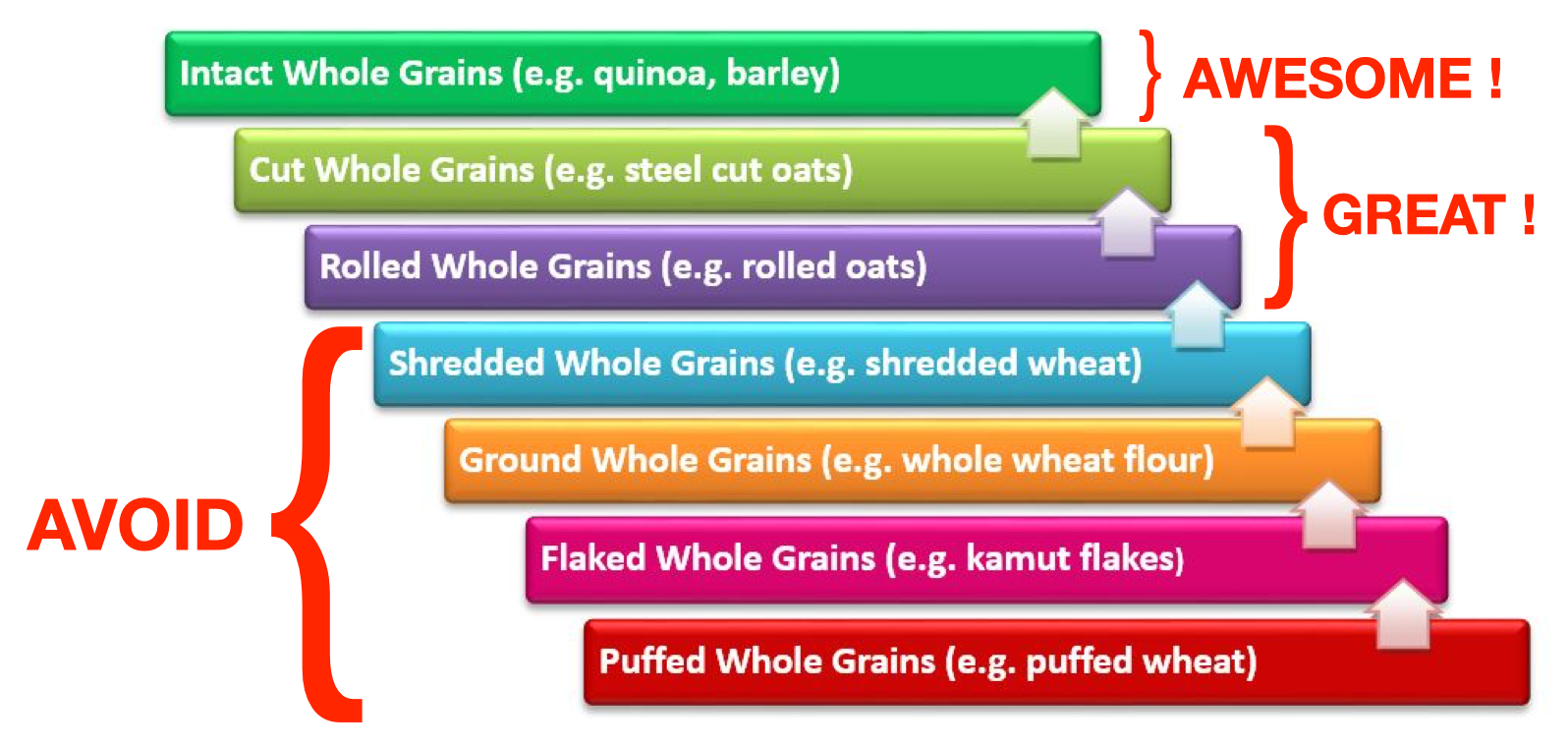Speaker: Brenda Davis, Registered Dietitian and Nutritionist from Canada.
Duration: 12 min.
Summary: How should we consume whole grains: whole? sprouted? broken? rolled? flours? bread (sprouted / dense / fluffy)? pasta? shredded? flaked? puffed?
Details: Whole Grains by Brenda Davis.
At offset 10:31 in the Whole Grain Hierarchy video by Brenda Davis, she divides grains into 3 categories which may be called 'awesome!', 'great' and 'avoid' categories.
AWESOME:
- Intact Whole Grains: Awesome! See Intact Whole Grains.
GREAT:
- Broken Whole Grains are great! Examples: steel cut oats, cracked wheat ('dalia'), and coarse grained cornmeal. See Broken Whole Grains.
- Rolled Whole Grains: Okay. See Rolled, Flaked & Shredded Whole Grains.
AVOID: Brenda encourages those pursuing weight loss or tackling diabetes to drop all of these from their diet:
- Shredded Whole Grains: Avoid. See Rolled, Flaked & Shredded Whole Grains.
- Ground Whole Grains (Flours): Avoid. See Whole Grain Flours.
- Flaked Whole Grains: Avoid. See Rolled, Flaked & Shredded Whole Grains.
- Puffed / Popped Whole Grains: Avoid.
What about whole grain pasta and bread? For a discussion, see Whole Grain Bread & Pasta.
Why are intact whole grains the best? Why should we avoid pulverized or ground whole grains (whole grain flours)? Why are puffed whole grains the worst? Brenda Davis offers a high level overview of the science. For details, see The Science Underlying Whole Grains Hierarchy.

 Instagram
Instagram YouTube
YouTube